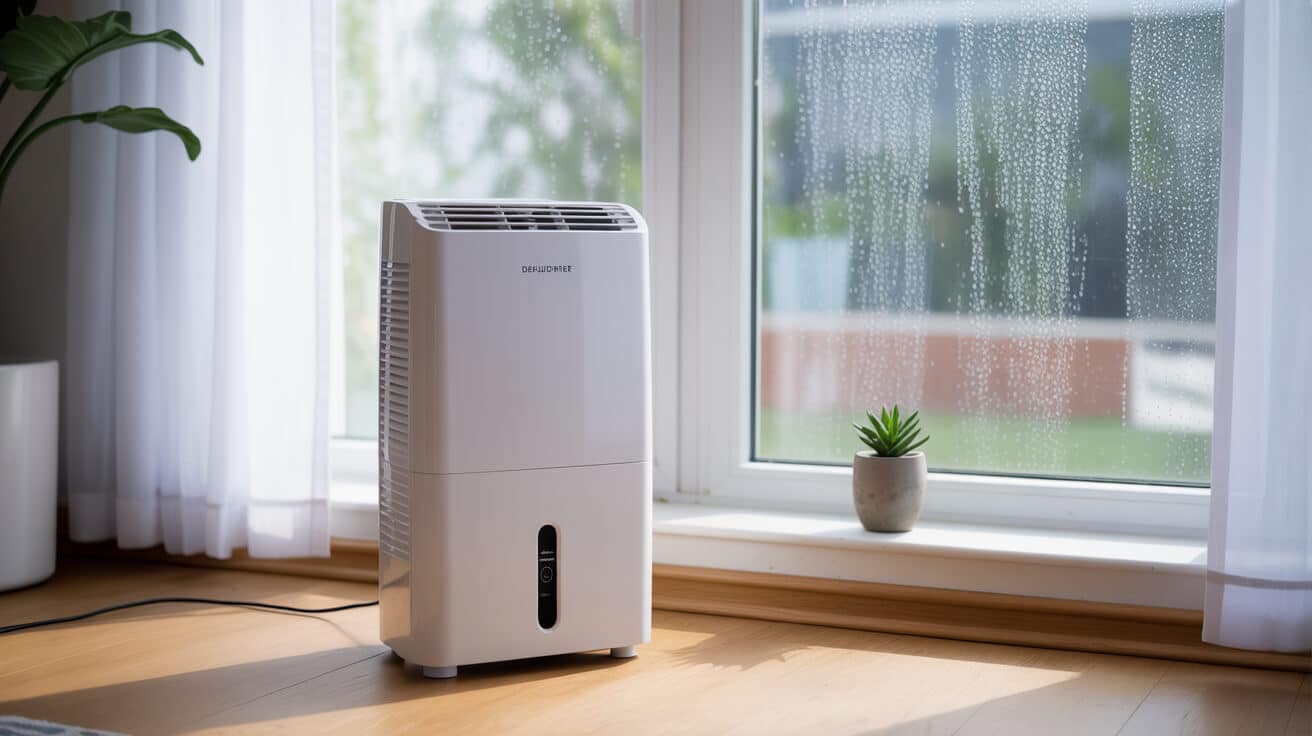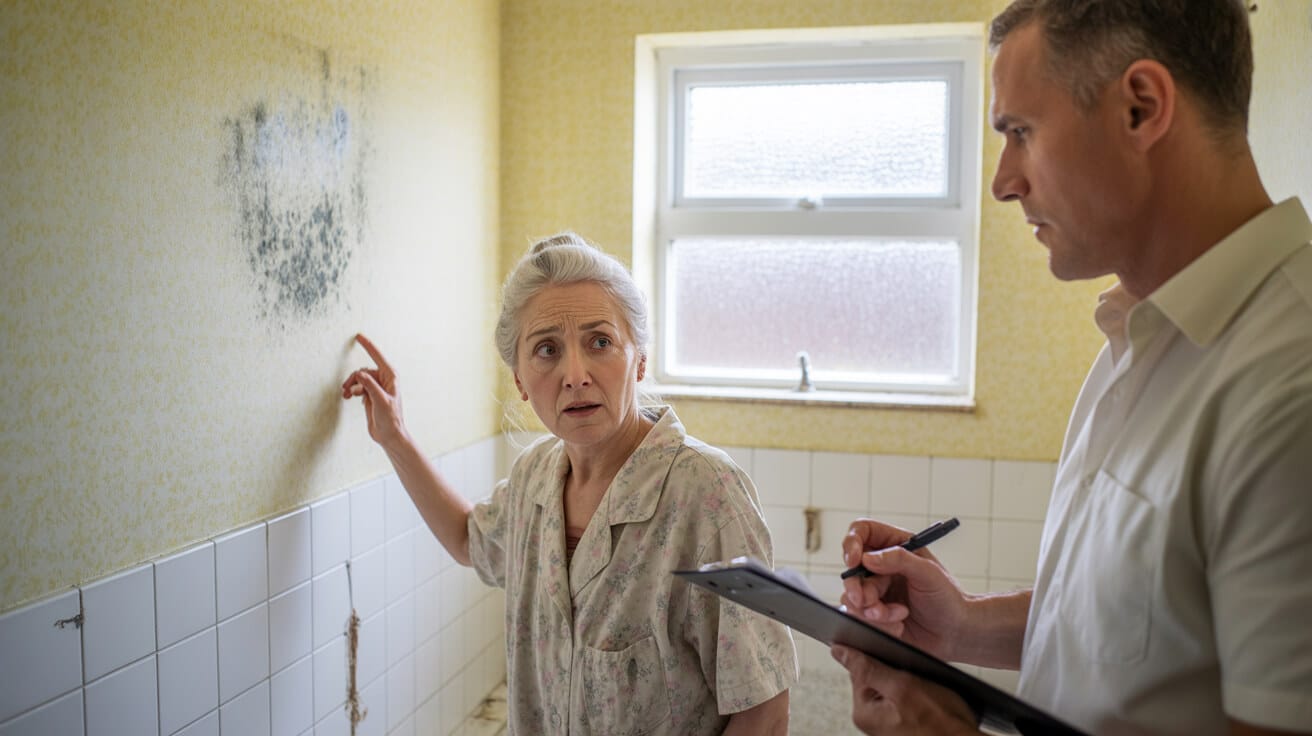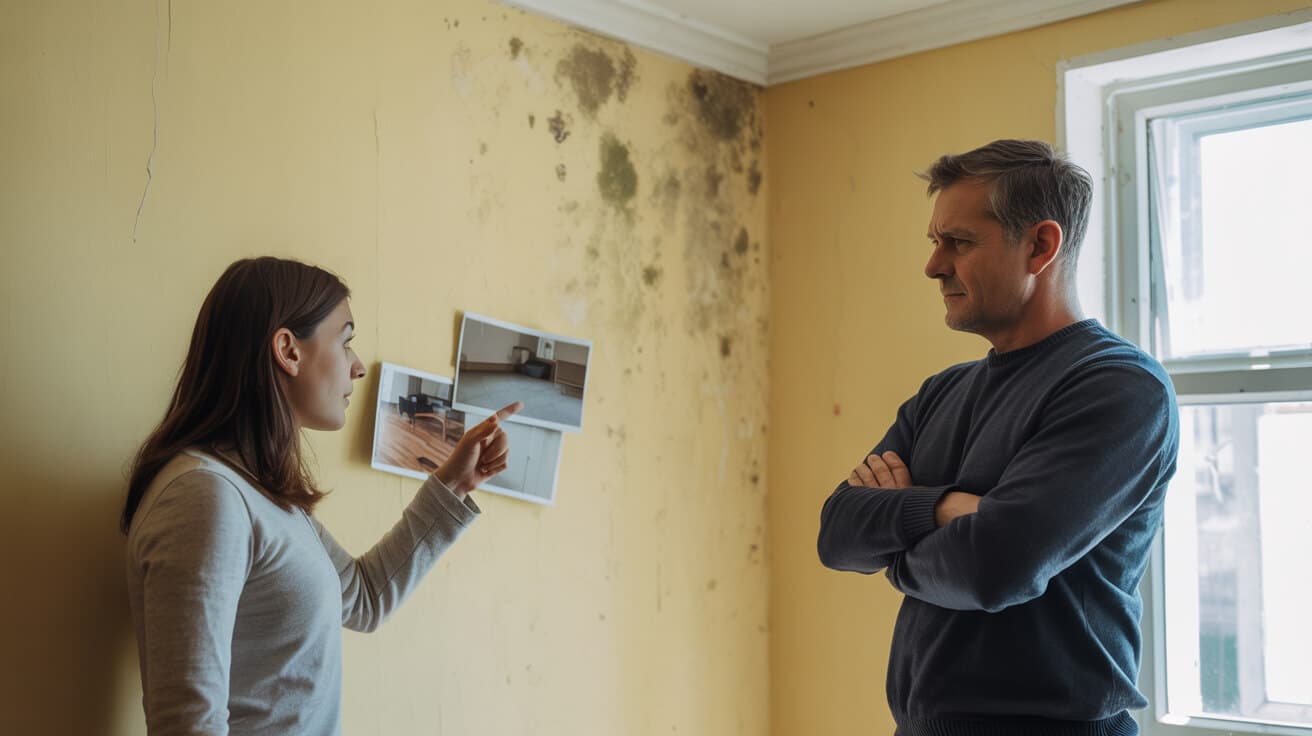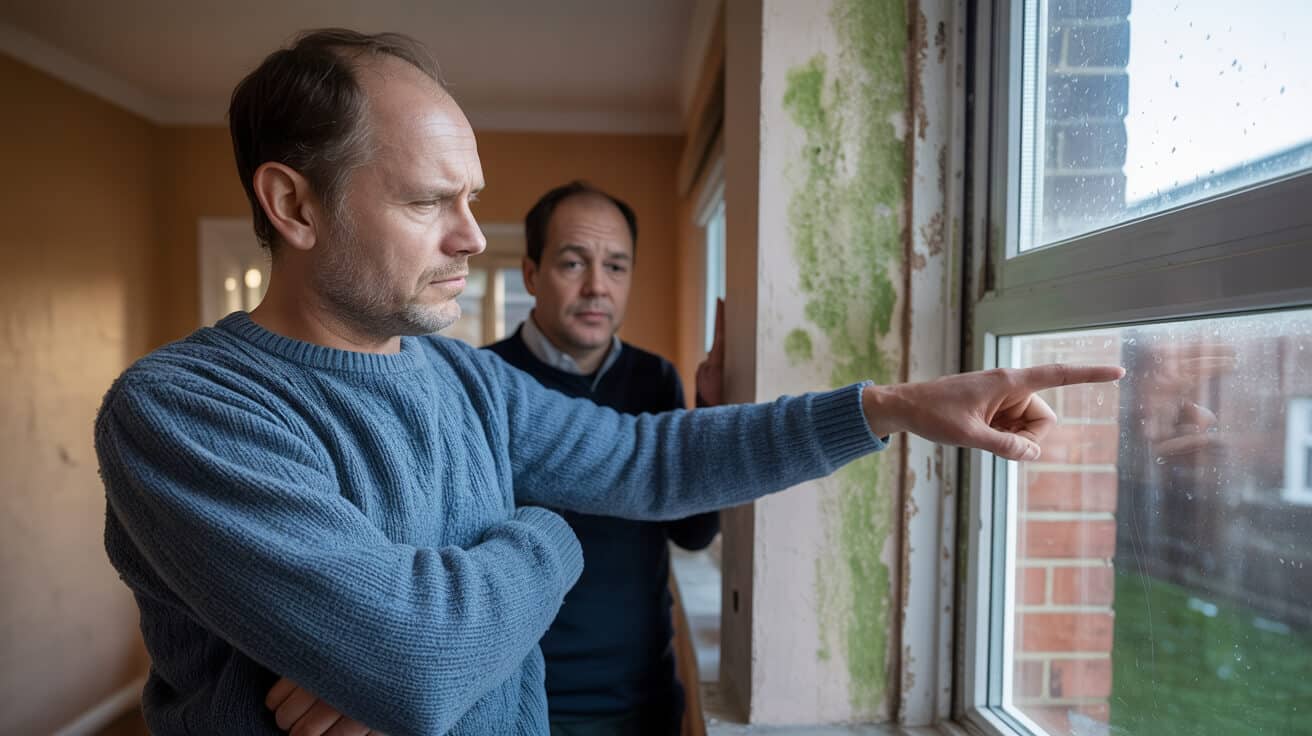 Managing Condensation And Damp As The Weather Turns Colder
Managing Condensation And Damp As The Weather Turns Colder

Why Does Condensation Hammer Properties When Temperatures Drop?
When the temperature outside nosedives, calculations and wishful thinking give way to reality. Masonry, glass, and plaster in your property become prime landing spots for invisible water vapour—the kind you breathe out, cook with, and steam off the shower. The colder the surface, the quicker all that moisture in the air condenses—first as mist and droplets, then as broad, spreading damp patches you never saw coming. What’s lethal is the speed: a standard UK family home generates up to 12 litres of moisture in a twenty-four-hour winter window (NRLA 2024), and if it can’t escape, it finds the coldest surface and claims it.
Condensation doesn’t wait for permission—it moves in wherever warm air meets cold walls.
Why does this matter now more than ever? Sealed-up homes, double glazing, airtight front doors—brilliant for energy bills, brutal for moisture management. Old buildings? Insulation gaps, dodgy window seals, and internal microclimates mean you’ve got condensation forming behind furniture, in corners, lurking in cracks you last thought about when you moved in.
After a cold snap, every property—residential, commercial, tower block or bungalow—shows its weaknesses. Damp never screams; it creeps. A “nothing” patch behind a wardrobe or sideboard becomes tangible when paint peels, black specks bloom, or tenants start reporting musty odours out of nowhere.
The hard reality: colder weather spots the gaps in routine, maintenance, and design. Once surface temps drop and habits don’t pivot, you’re on the clock—and the repair bill gets steeper the longer the warnings are brushed off.
How Do Everyday Routines Pour Petrol on the Condensation Problem?

You don’t need leaks or floods to see humidity surge indoors. What torpedoes even a well-maintained flat or office block are the simple routines: steamy morning showers, spuds boiling for dinner, laundry hanging over radiators, or working from home with everyone exhaling in one space. Each of these loads the air with water faster than you think. Just breathing deposits up to a kilo of water vapour per person daily; run a bath, cook for a crowd, and watch that number near double figures (EnviroVent 2024).
Moisture is silent—the first sign is never a puddle, but stale air, chill corners, and a faint earthy scent.
It gets worse in winter because the urge to lock out the cold leads people to slam windows shut and block up vents—trapping all that humidity inside just as condensation risk peaks. That’s when wardrobes start to reek, clothes feel a bit damp even after hanging for hours, and patches appear, first subtly, then with alarming clarity, behind furniture and in room corners, especially north-facing walls.
Family or team spending all day indoors? Moisture output climbs, and modern open-plan layouts mean it’s no longer isolated—steam and vapour search for cold surfaces in every room. The impact compounds: hidden pockets of damp sneak by until they trigger rent disputes, insurance snags, or, for property managers, a round of costly repairs you could have prevented for pennies.
Recognise the pattern: trusted routines can quietly make properties vulnerable. The solution isn’t to stop living—it’s to sharpen how you manage airflow and react to warning signs.
Can You Stay Warm, Slash Bills, and Avoid Damp All At Once?

The idea that energy efficiency is an enemy of dry, healthy air? Outdated. You’re not forced to pick between “cosy” and “condensation-free”. Here’s the reality: ventilation and warmth, done in partnership, slash the risk. The old “crack a window all day” wastes heat. The new breed of property maintenance wins on timed, forceful ventilation—two short, sharp blasts a day, five to ten minutes, windows wide open, preferably during the warmest daylight hours. This method flushes room air and resets relative humidity, with minimal heat loss (Gov.uk 2023).
Comfort is built on a system: heat high enough to stop surfaces from chilling, air movement sharp enough to prevent moisture from pooling.
The best property managers set reminders to check on vent covers, bathroom fans, and kitchen extractors—if they’re clogged, even 10/10 ventilation strategies falter. Left closed, blocked, or dusty, trickle vents won’t protect you. It’s the easy stuff—pulling wardrobes and sofas three inches off the wall, not letting laundry air out in the dead centre of the lounge—that keeps you on the right side of the damp ledger.
Keep an eye on your thermostat as well. The worst mistake: letting rooms drop so cold the next “blast” of heat creates condensation on every wall and windowsill. Try to maintain consistent background heat, even low and steady, enough to keep walls and glass above dew point. Sudden temp drops make it tougher for surfaces to release moisture safely back into the air.
You don’t need a gadget arsenal—what you need is strategy and repetition. The dividend is a property that’s both snug and dry, with lower risk for tenant complaints, compliance breaches, and costly cosmetic fixes.
What Damage and Costs Lurk Beneath “A Little Damp”?

Live with damp for a season, and you’re volunteering for a parade of issues—first with air quality, then with building fabric, and finally with your bottom line. Recent NHS data puts the annual figure for UK households seeing visible mould or persistent damp over 20% (NHS 2024). But that’s just the surface:
- Health impact: Damp and mould spores attack lungs, supercharging asthma, allergies, and chest infections—especially in kids and elderly. For anyone immunocompromised, the risk curve doubles.
- Asset destruction: Warped wood, bubbling paint, and persistent stains mean you’re not patching for looks—you’re often warding off structural headaches that end up ten times the cost.
- Legal and financial blowback: Modern UK law (Homes Act 2018, HHSRS, and others) pins full responsibility on property owners and managers to eradicate persistent damp and mould. Ignore the problem, and fines or housing tribunal disputes will chase your reputation as much as your wallet *(Gov.uk 2024)*.
- Ongoing costs: Properties with damp feel colder to occupants and cost more to heat—moist air drains efficiency, meaning higher bills for owners, tenants, or facility managers.
Damp is not a design flaw or periodic nuisance—it’s a weak link capable of collapsing property value, comfort, and compliance at once.
Replace inaction with decisive steps: when symptoms show—chill, must, plaster crumbling—react fast. Quick action catches silent escalation and keeps routine repairs from mutating into insurance claims or negative inspection notes.
Are Habits Stronger Than Any Gadget or Gimmick Against Condensation?

There’s a myth that dehumidifiers, plug-in philtres, or clever “anti-damp” sprays are a silver bullet. Data—and thousands of property logs—say otherwise. Discipline beats gadgetry, and it’s the tiny routines that drive wins, not a £200 device (NRLA 2024).
Here’s what tips the outcome in your favour:
- Use pan lids when cooking, fans during showers, and keep doors shut.: These basics keep steamy air from wandering where it’s least wanted.
- Laundry?: Move it to a contained space, crack a window rather than opening up the whole flat, and keep the door closed—humidity spikes die out faster.
- Fan and vent hygiene is non-negotiable.: A dust layer can cut efficiency by 50%, nullifying the very systems installed to fix moisture.
- Don’t barricade furniture against cold walls.: Even a small offset allows air to flow, drying spots before they become black marks or odour factories.
- High-moisture routines: Open a window just after a shower, mop-up, or cleaning floors. Those 10 minutes count more than any air freshener.
In seven days, consistent habits will shift the whole feel of your air and banish surface issues before they take root.
Salt pots, chemical absorbers, or constant dehumidifier runs can help in specific cases, but the winning strategy is always proactive, zero-cost behaviour. It’s consistency, not complexity, that insulates your asset from silent risks.
What Systems Guarantee Dry, Comfortable Living All Season Without Guesswork?

Winter comfort is built from predictable systems, not guesswork or random fixes. Exactly two things work, every time: constant low-level heating, and forceful, short ventilation windows (Gov.uk 2023). Combine these habits and you future-proof the property.
- Steady low warmth: Don’t let rooms plunge cold—keep a baseline heat across your space to keep surfaces from inviting dew.
- Vent smart, not long: A 5–10 minute window opening (yes, wide—even in winter) twice daily swaps damp, stale air for fresh, and doesn’t gut your energy spend.
- Distribute heat, defeat dead-zones: Use radiator valves and smart thermostats to push warmth into corners, not just main rooms. Condensation loves stagnant, neglected areas.
- Differentiate placement: Nudge sofas, wardrobes, and shelves off cold walls; tight spaces are always a risk, even if they look fine on the surface.
- Fan and vent maintenance beats any gadget: Over a season, cleaned and checked fans move more air for zero extra cost than any plug-in solution.
Five minutes a day keeps a season of damp—and weeks of email complaints—away.
The bonus? You get consistent comfort, cleaner air, and cut future maintenance outlays. Even more: you create a property reputation that attracts, not repels, the best tenants or commercial clients.
When Should You Reach for Professional Help or Dehumidifiers?

Most issues fall with routine, but certain patterns beg for backup or tech:
- if one room or corner constantly feels damp, even after ramping up normal tactics, it may need a modern dehumidifier—energy efficient, auto-sensing, pulling litres out per day without driving bills up *(Woman & Home 2024)*.
- Basement, cellar, and below-ground spaces are classic weak points—persistent damp, musty walls, puddles that return within days? That’s the textbook use for a dehumidifier or technical intervention.
- Recurring mould or “clean-return” damp: These are the biggest red flags—likely a deeper leak or failed damp-proof course. Here, a property specialist doesn’t just fix; they evidence, trace, and guarantee a regulatory-compliant outcome.
- Legal compliance or asset protection: Landlords and facility managers with inspections on the horizon, or blocks with vulnerable tenants, should fast-track a professional survey. It’s far cheaper than paying after-the-fact fines or damage claims.
The price of late action is always higher—and not just in money, but in trust and days lost to drama.
A reliable multi-trade team rolls up with diagnostics kit (thermal imaging, moisture metres), maps issues for you in plain English, and leaves photo-evidenced fixes you can show to any insurer, tenant, or auditor. The difference? You sleep at night and avoid unnecessary drama.
Why Is All Services 4U Trusted by Property Leaders for Solving Damp and Condensation?

Action matters. All Services 4U is built from the ground up around rapid, no-nonsense results for property owners, block managers, facilities teams, and commercial stakeholders. We recruit multi-trade, City & Guilds-qualified technicians who aren’t just compliance-trained and security-cleared—they handle plumbing, electrics, joinery, and damp-proofing in a single visit. That means:
- One call, every trade covered: No more juggling contractors or shuttling blame. We unify multi-trade repairs and finish jobs same-day when possible.
- Evidence, not excuses: Every fix is logged in digital reports, with before/after proof, mapped against compliance for HHSRS, HSE, and Fire Safety Order needs.
- Proactive escalation: See something that needs levelling up—escalated to senior trades or flagged for further inspection before it hurts property value or legal compliance.
- Communication that works for clients and tenants: No jargon, no spin. Every report is written so every party—landlord, manager, agent, or resident—knows what was done, why, and what’s next.
Repairs may go unseen, but the trust and compliance you gain from them is visible in every inspection.
Our clients don’t just get fixes. They get freedom from repeated calls, visible proof for insurers and agents, and smoother compliance across their portfolios. Real asset value, less noise, and fewer days lost to avoidable drama.
Protect Your Portfolio—Say Goodbye to Damp and Condensation. Start with All Services 4U.
Winter brings the same old challenges—cold, damp, and the risk of spiralling complaints—but you don’t need to accept them as routine. With All Services 4U, you buy peace of mind rooted in results:
- Multi-trade fixes: all core trades, compliance, and finishes sorted together
- Transparent, photo-backed digital reports for every callout
- Solutions mapped to regulatory frameworks for landlords and managers
- Responsive support for emergencies or recurring headaches
You’re not looking for another generic repair—you want the problem closed, compliance secured, and tenants or team back to “business as usual”. If your aim is lasting property health and asset growth, connect with All Services 4U today. Make one call and let results—not promises—do the talking.
Frequently Asked Questions
What overlooked seasonal shifts make condensation and damp a hidden property risk?
Damp and condensation spike precisely when colder weather meets a tightly sealed home—pairing winter’s longer nights and greater heating demands with the invisible byproducts of daily indoor life. As soon as insulation and double-glazing lock warmth inside, something unexpected happens: every breath, shower, boiling kettle, or load of laundry traps more moisture, which clings to any surface colder than the room air. The quieter threat? Moisture tracks a path to the coldest window ledge or wall behind your sofa, meaning even well-maintained buildings face silent accumulation long before visible damage emerges. The Royal Institution of Chartered Surveyors reports that over 70% of UK homes see window condensation in winter, regardless of property age or location. Many building managers miss the warning signs, allowing minor haze to morph into widespread damp and eventual mould.
Tiny changes in temperature can turn yesterday’s minor window mist into next week’s soaked plaster—detect the shift, prevent the spiral.
Why are certain periods especially risky for hidden damp?
- Sudden temperature drops trigger “dew points,” where water vapour condenses on chilly walls and glass, even if routines haven’t changed.
- Extended use of heating and indoor activities mean daytime humidity rarely escapes for weeks, especially if windows are seldom opened.
- High-performance insulation prevents draughts but also limits the movement of moist air, resulting in microclimates ripe for growth.
Which weather shifts are the best early warning?
- Persistent mist on windows most mornings after a cold snap
- Rooms feeling stuffy or developing a faint musty odour, particularly as external temperature drops quickly overnight
- New stains or darkening paint along exterior-facing walls or ceilings
Professional insight paired with regular attention to local weather patterns allows proactive defence—stopping condensation from becoming tomorrow’s emergency repair.
How do daily routines quietly increase the risk of condensation and mould—despite good maintenance?
Many property managers believe meticulous cleaning and upkeep are enough, yet it’s the subtle, everyday routines that can escalate moisture problems. Survey results from the UK Centre for Moisture in Buildings show that over 85% of households dry laundry indoors in winter months, inadvertently boosting daily humidity by multiple litres—often without noticing. Cooking with lids off, blocking airbricks with furniture, underusing extractor fans (due to noise or confusion about their function), and leaving steamy bathrooms open even briefly can all skyrocket condensation risk overnight.
It’s the habits you overlook that shape the hidden battles your property fights with water.
What small actions have the biggest hidden impact?
- Skipping extractor usage after evening showers or during steamy cooking
- Forgetting to close bathroom and kitchen doors in winter, letting humid air drift room-to-room
- Storing furniture flush against outer walls, preventing air circulation and creating “cold traps”
- Piling up laundry—damp towels or drying clothes—on radiators with windows shut tight
How can owners curb habits without disrupting comfort?
- Move heavy items or wardrobes 5cm from external walls, regardless of property size
- Schedule short, powerful ventilation bursts—windows wide open for 5-10 minutes after washing, cooking, or bathing
- Dry clothing near an open window or, when unavoidable, split loads over several days
Reviewing indoor routines with a damp awareness lens enables smarter management, often reducing humidity before gadgets are ever needed. Proactive support from multi-trade experts like All Services 4U can help you spot and break these silent cycles for lasting improvement.
Which strategies truly balance warmth, ventilation, and mould prevention during colder months?
Striking the right balance between comfort and dryness requires more than just blasting heating or buying a dehumidifier. The Department for Levelling Up now recommends intermittent high-impact ventilation—short, forceful air changes instead of minor, continuous draughts—paired with steady, background warmth. For most properties, this means “vent bursts” (windows wide open for a few minutes after moisture-producing activities) and low, reliable heat that prevents wall and window surfaces from dropping below the dew point. Technical solutions (from trickle vents to mechanical ventilation units) offer extra backup but rarely replace disciplined routines.
A warm, dry home is engineered day by day—successful managers shape climate by habit, not just hardware.
How can managers find their property’s unique balance?
- Track when and where condensation appears—morning, after showers, post-cooking—then tailor venting routines accordingly
- Use thermometers or inexpensive humidity gauges to spot rooms with persistent high moisture, not just visual cues
- Test if air bricks and trickle vents are blocked; re-open or clean if they’re stiff, then monitor if surface damp lessens
- Maintain moderate, never extreme, indoor temperatures; rapid thermal swings fuel condensation
What if even perfect routines fail?
- Chronic cold patches likely signal insulation flaws, blocked airflow routes, or hidden leaks that a walk-through alone can’t reveal
- Hiring a technician for an air-tightness or thermal survey diagnoses root issues, removing guesswork
A dynamic, property-specific approach—reviewed by professionals like those at All Services 4U—ensures you’re not left choosing between comfort and safety.
What are the latest documented health and financial outcomes from neglecting winter damp?
Damp that’s left unchecked does much more than look unsightly. Recent NHS data links persistent indoor mould to a 60% increased risk of respiratory distress in young children and the elderly during the winter surge. Meanwhile, severe cases have prompted significant compensation claims under the Homes (Fitness for Human Habitation) Act, including legal actions where landlords failed to act. For owner-occupiers, repair costs rise steeply when heavy damp leads to timber rot, ceiling collapse, or electrical faults—some studies reporting up to a 30% higher remediation cost if intervention is delayed more than 90 days from the first sign. The reputational threat is no less real: properties with visible damp are routinely valued 10%–20% below their local market rate.
Delay doesn’t just hurt your bottom line—it puts health, safety, and reputation at immediate risk, sometimes before you even see the warning.
What compliance and insurance risks now exist?
- Insurers require evidence of “reasonable intervention”; lack of documented maintenance can result in denied claims for water or mould damage
- Both local authorities and tenant advocacy groups increasingly audit for compliance with the HHSRS and fitness for habitation laws, triggering enforcement or rent repayment where issues are systemic
- Businesses with recurring indoor air complaints face HSE audits—and brand impact if complaints go public
A structured, pre-emptive approach—complete with digital maintenance logs and rapid response protocols—becomes the new standard for responsible property management.
When do investments in technology outperform routine habit changes—and when are they needless?
Dehumidifiers, smart sensors, and remote air quality monitors all have a place—but too often, they’re reached for as first answers, not strategic upgrades. Contemporary research by the Chartered Institute of Environmental Health finds that real, lasting reduction in damp risk starts with human behaviour: routine, well-timed ventilation and deliberate drying cycles cut moisture loads by up to 70% compared to device-only approaches. Tech amplifies success only in high-risk settings: old basements, overcrowded flats, or properties with built-in ventilation limits. Otherwise, most dehumidifiers just chase the daily tide of humidity, offering small wins at a meaningful running cost.
Don’t outsource vigilance to gadgets—build resilience through routine, then use tech as armour, not as a shield.
Should every property rely on air quality tech or sensors?
- Damp that returns within days of cleaning, appears in newly refitted areas, or causes persistent odours deserves a monitored intervention
- Multiple residents drying laundry without access to outdoor spaces create “moisture-rich” environments where sensors pay off quickly
- Heritage, converted, or poorly cross-ventilated buildings can benefit from continuous tracking and timely alerts
When do expert assessments become non-negotiable?
- Structural hints (crumbling plaster, warped skirting, blackened insulation) or successive failed self-fixes demand specialist evaluation
- Engaging a multi-trade provider ensures that root causes—roof, ground, pipework, ventilation—are tested in sequence, not in isolation
Confident property teams document both habit and tech measures, proving to insurers and tenants that every reasonable effort was made to maintain a healthy, dry environment.
Why do leading property managers choose All Services 4U for year-round damp control and compliance?
All Services 4U brings together multi-trade skill, up-to-date compliance expertise, and digital management to prevent and solve damp and condensation at the source, not just on the surface. As regulatory scrutiny tightens and tenant expectations climb, what sets these teams apart is a proactive method: every call triggers a system-wide review, combining plumbing, electrics, building fabric, and audit-grade evidence—delivered in one cost-efficient visit. Their aftercare means you own a living maintenance trail, ready for insurers or regulators at any time, and reassurance for residents that problems will be fixed the first time, not just deferred. Surveyed portfolio managers using this approach reported a 40% drop in annual callouts for damp and a 30% faster compliance approval during spot audits.
Leadership in property management is built on proof, not promises—document your defences, and reputation follows.
What exclusive advantages does All Services 4U offer?
- Fast deployment of qualified, DBS-checked technicians with up-to-date regulatory knowledge, reducing delays and missed legal deadlines
- Integrated digital record-keeping—complete with photo-logged interventions and aftercare notes—across every scheduled and emergency job
- Escalation system: complex or recurrent damp issues are immediately referred up, ensuring no time is lost to “guess-and-check” repairs
- Direct support through landlord, facilities, and insurance documentation—every audit trail is built and maintained for you
- Ongoing habit-shaping advice, so every team member (or tenant) gets custom tips for damp prevention, not just technical fixes
Choosing All Services 4U gives property managers, landlords, and fund owners more than a repair plan—it delivers an operational edge in today’s compliance-focused market, while safeguarding every asset’s value and your own peace of mind.



